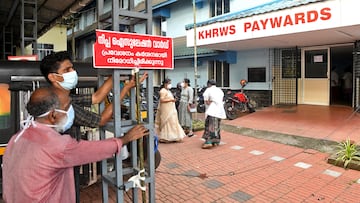HEALTH
What is happening in India with the Nipah Virus? How it is spread and its symptoms
The Asian country has recorded two deaths from the virus. Quarantine measures have been taken as the virus has no vaccine and its mortality rate is high.

Viruses are unpredictable. The Nipah virus (NiV), which has reappeared in southern India after the death of two people.
Schools have been closed in at least seven villages in the district of Kozhikode, in the state of Kerala. Kerala Health Minister Veena George announced in a parliamentary session that these villages have been declared as virus containment zones.
The country’s experts have already moved to the state affected by the Nipah outbreak to collect fluid samples from bats as well as fruit trees in the area; both are potential carriers of a virus.
“We are carrying out tests on human beings and, at the same time, experts are collecting samples of fluids from wooded areas that could be the hot spot for the spread,” George confirmed.
The first outbreak of this virus in India was detected in June 2018, when 17 people died in Kozhikode and Mallapuram. In 2021, this disease was also detected in several species of bats in the country.
Symptoms and how Nipah is spread
The deadly Nipah virus is a zoonotic disease, meaning it can be transmitted from animals to humans and itt was first recorded in domestic pigs in Malaysia and Singapore in the 1990s.
The natural hosts of this virus are bats, especially fruit-eating bats. Symptoms in the initial phase with headache, high fever, vomiting, muscle pain and respiratory complications. However, in more serious cases it can cause encephalitis, an inflammation of the brain.
The main form of infection is through the body fluids of an infected person, such as saliva or blood. But are not the only ones. According to the World Health Organization (WHO), it can also be transmitted through fruits and products such as sap, previously contaminated with urine or saliva from infected fruit bats. The agency states that the lethality ranges between 40% and 75%.
The incubation period is approximately between four and fourteen days. According to WHO data, 20% of patients who recover are left with residual neurological issues, such as seizures and personality changes.
There is no preventive vaccine for this virus, so experts can only deal with symptomatic treatments through monoclonal antibodies. Along with other viruses such as Ebola or Zika, the WHO includes it as priority diseases for investigation due to its epidemic potential.





